 Emission Nebulae
Emission Nebulae
NGC 7000 (North America Nebula)
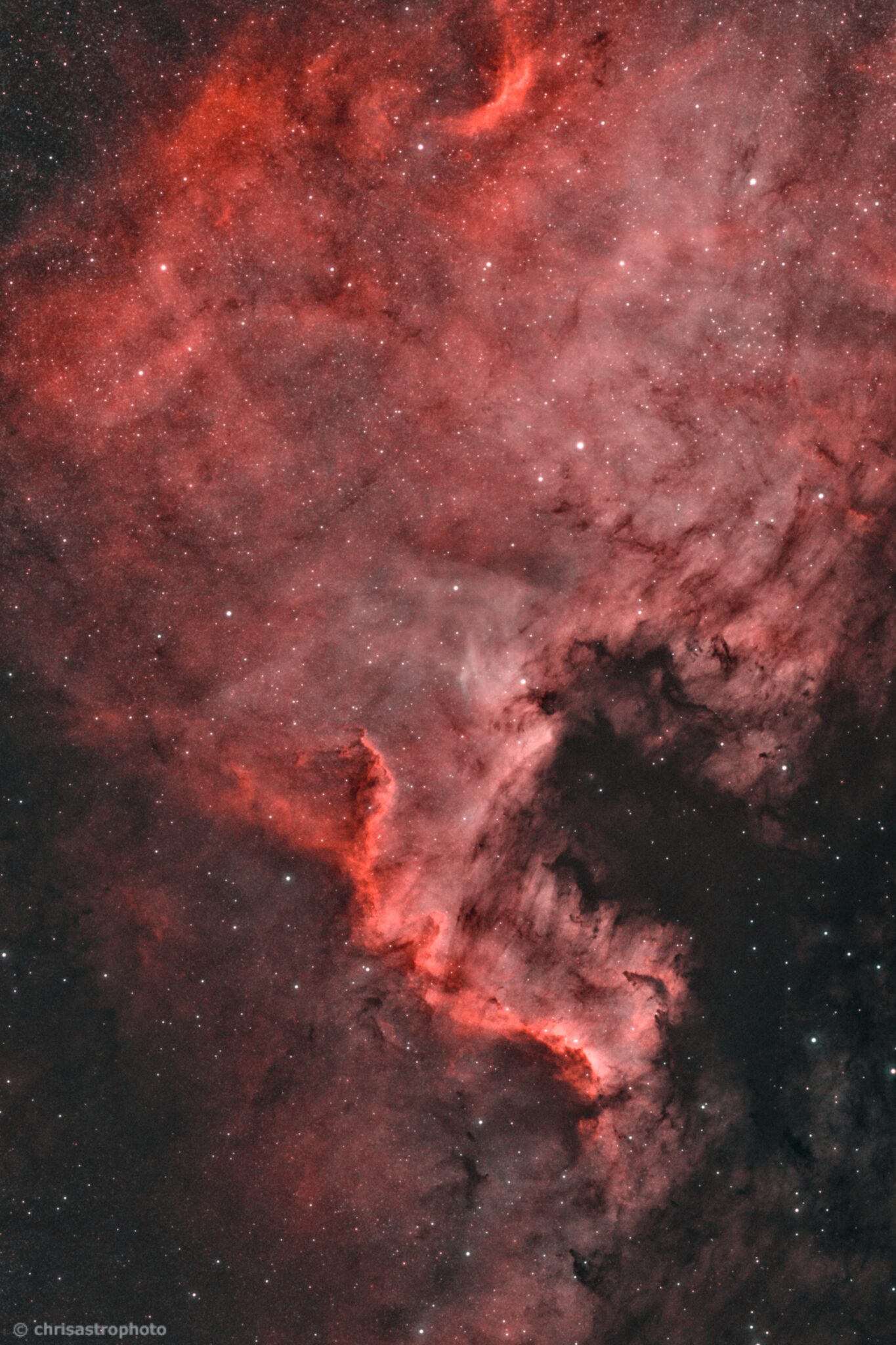
Famous emission nebula in Cygnus. The form gives it its name. It is about 2600 light years away.
Read more “NGC 7000 (North America Nebula)” Emission Nebulae
Emission Nebulae

Famous emission nebula in Cygnus. The form gives it its name. It is about 2600 light years away.
Read more “NGC 7000 (North America Nebula)” Dark Nebulae
Dark Nebulae
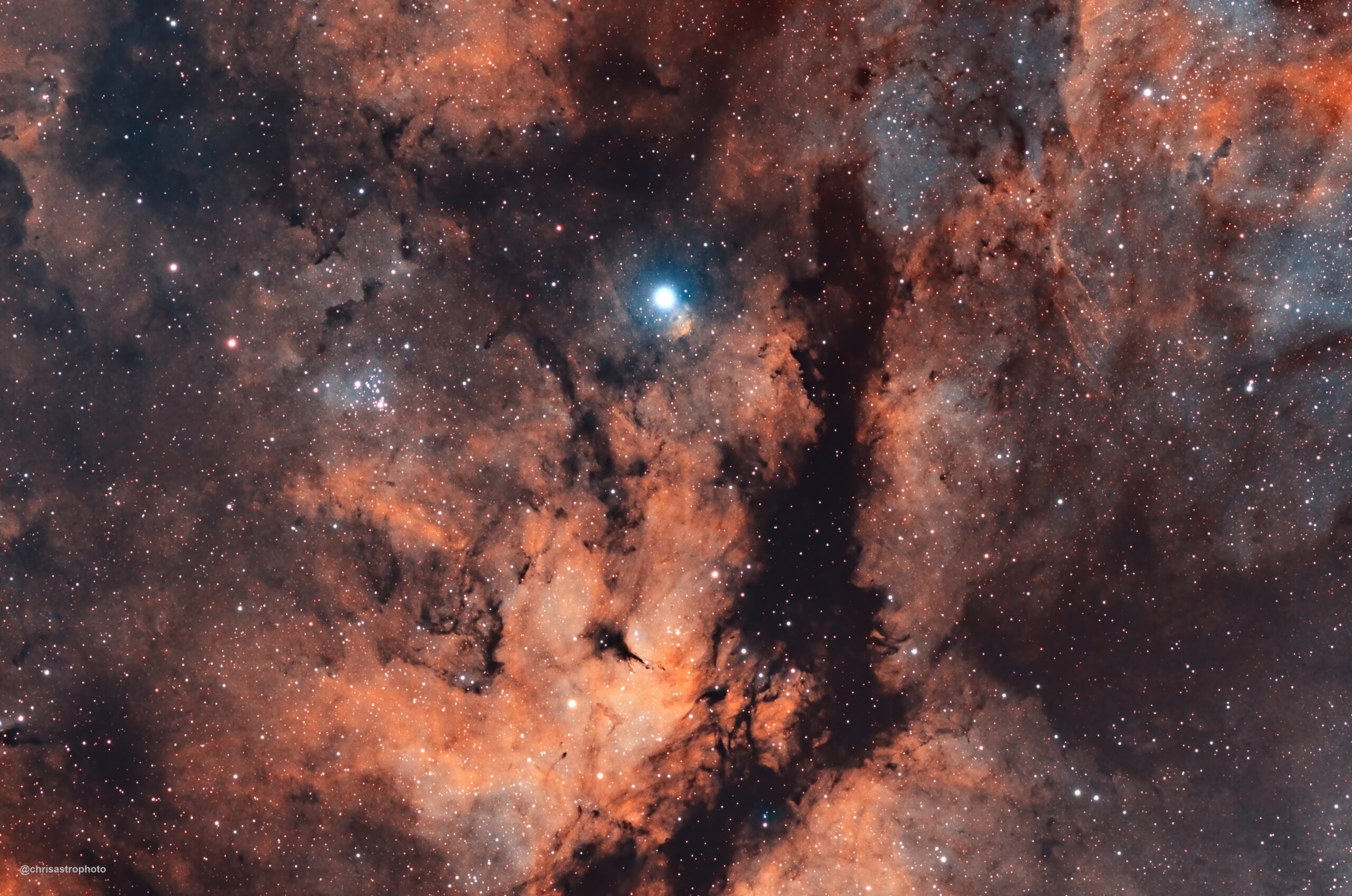
Gammy Cygni (Sadr) is the bright blue star in the center of this image. It is 1800 light years away and the nebulosity in this image (IC 1318) is far behind (4900 light years).
Read more “Region around Sadr (Gamma Cygni)” Other
Other
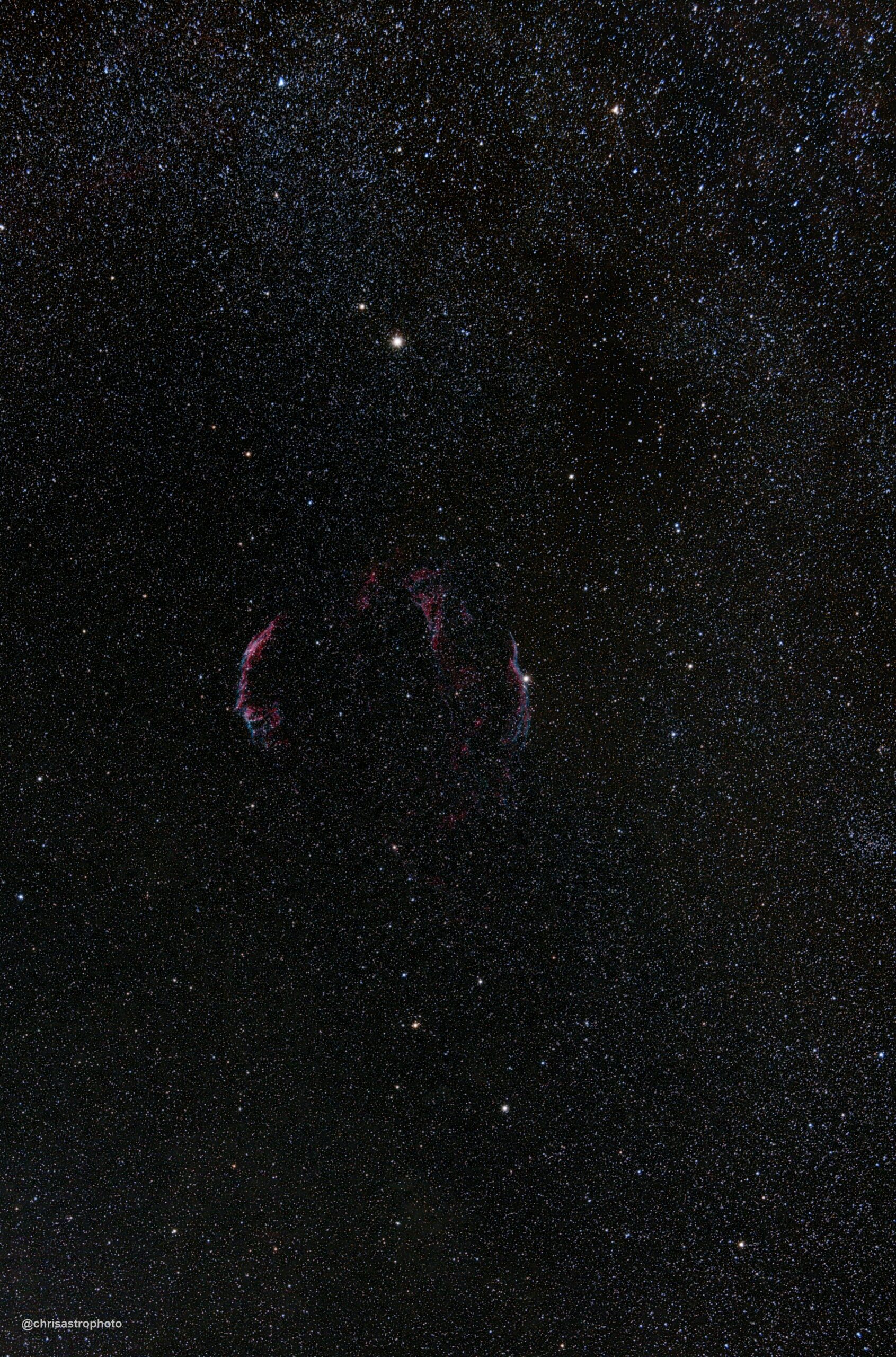
Veil Nebula, a supernova remnant in constellation Cygnus.
Read more “Veil Nebula” Galaxies
Galaxies
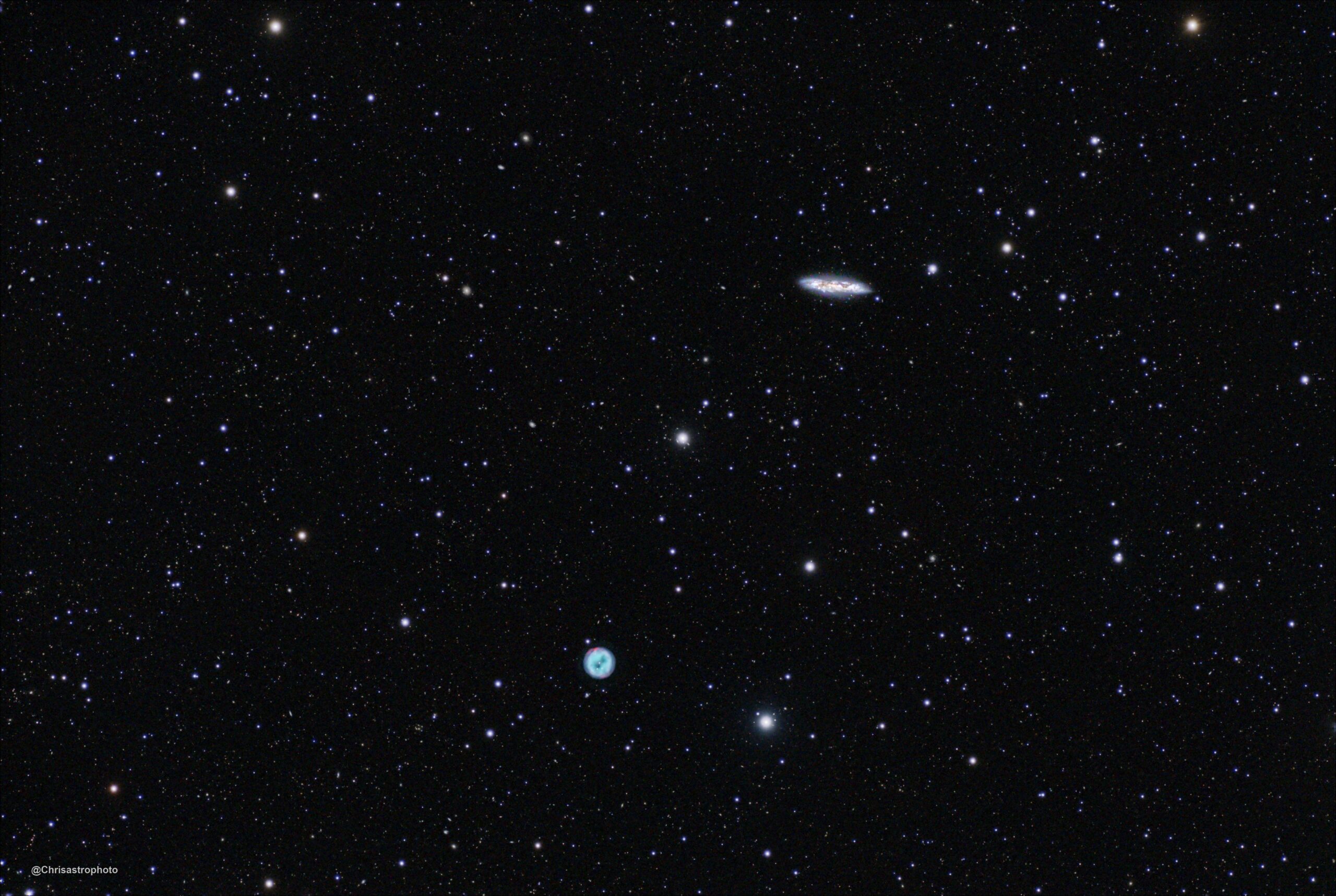
These two object accidentally fit into one frame. On the bottom the Owl Nebula, a planetary nebula 2000 light years away, on the top the so called Surfboard Galaxy 40 million light yeras away. Quite a difference …
Read more “M97, M108 (The Owl and the Surfboard)” Dark Nebulae
Dark Nebulae
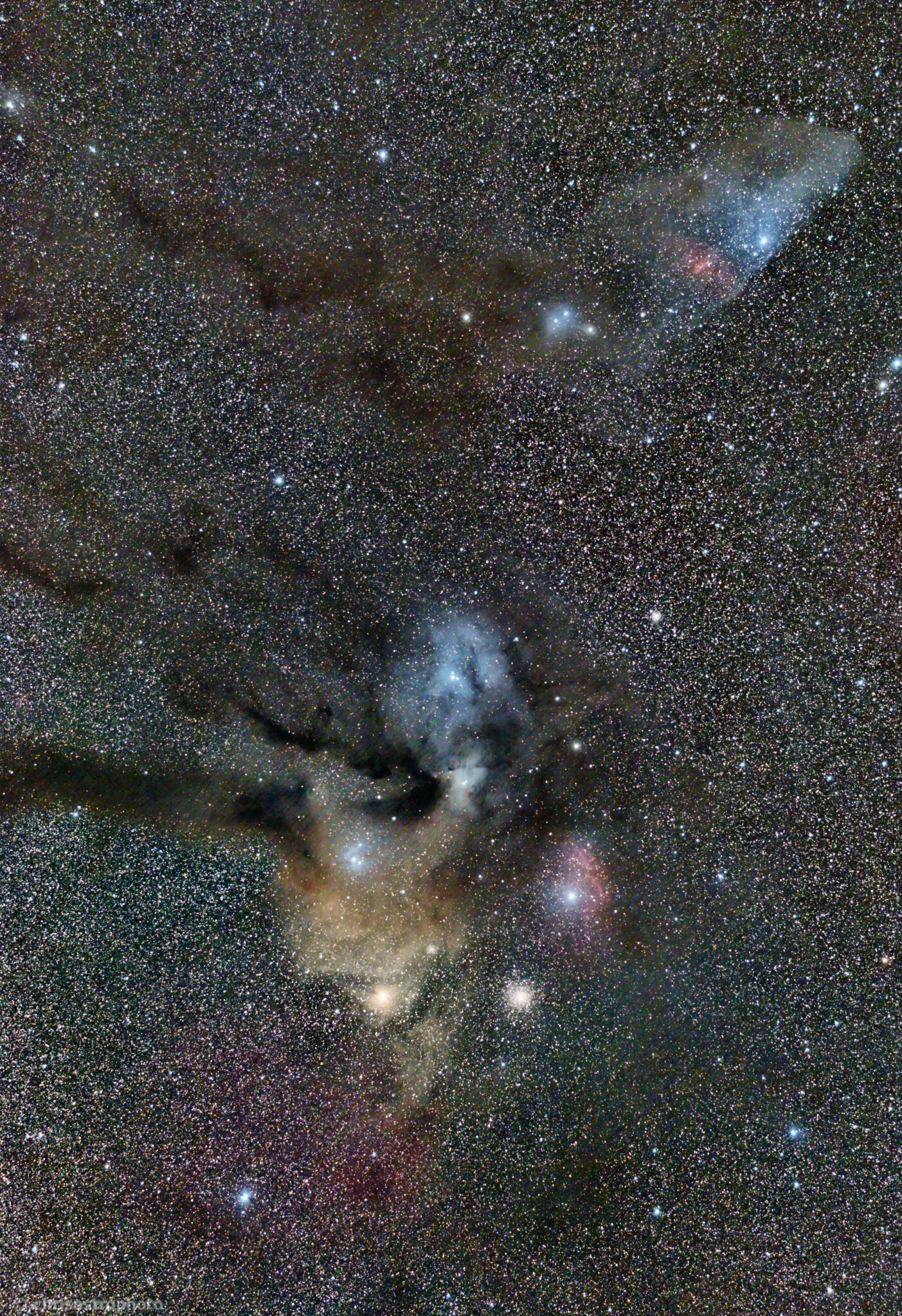
This is a relatively close star forming region (about 460 lightyears) in constellation Ophiuchus. Also visible below the nebulae Globular Cluster M4 at about 7200 light years distance and bright super giant star Antares in Scorpius just left to M4. On top the so called Blue Horsehead Nebula. Stripes of dark clouds at the left pointing to the core of our Milky Way.
Read more “Rho Ophiuchi cloud complex” Emission Nebulae
Emission Nebulae
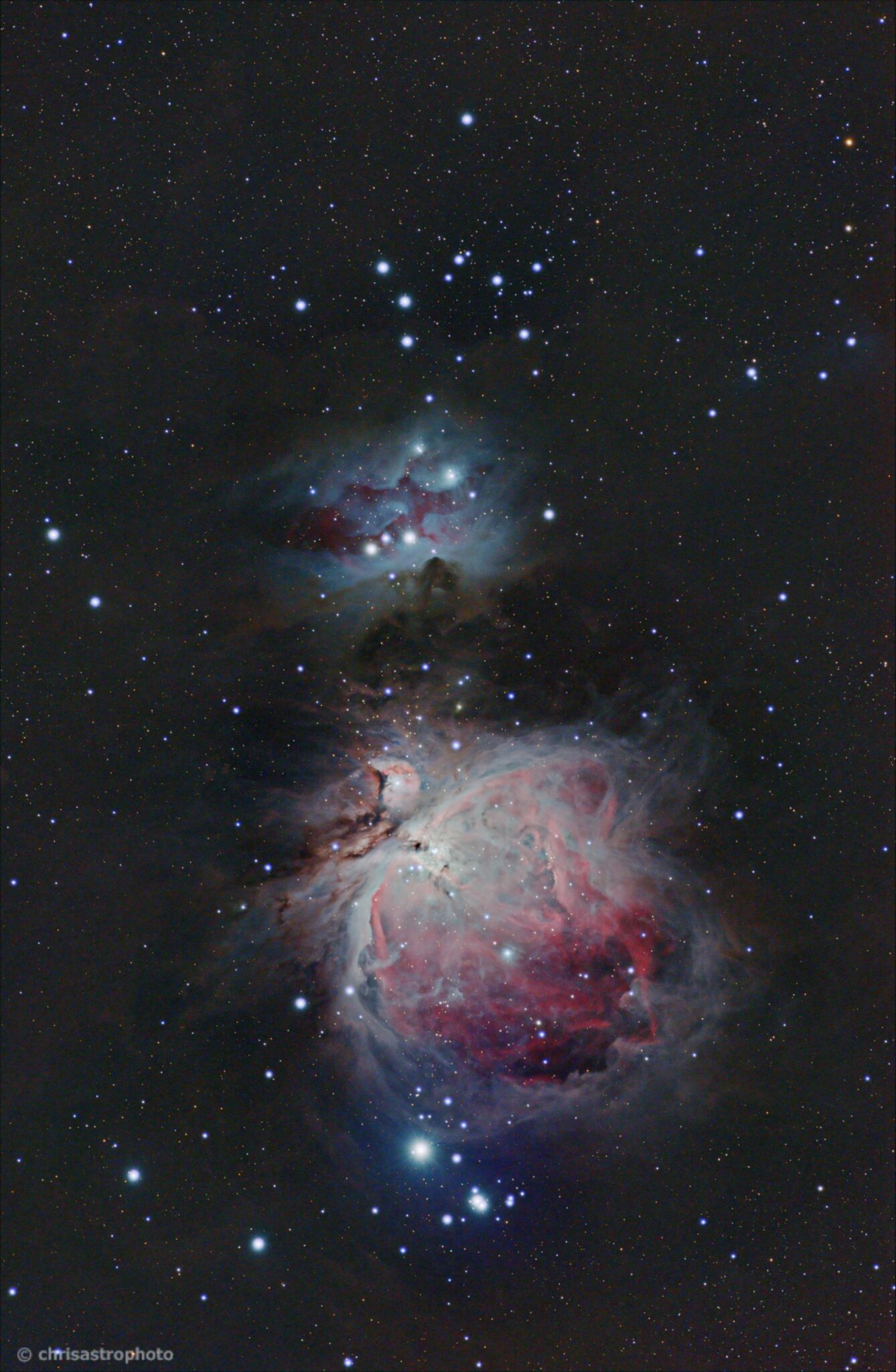
This is the brightest part of the huge nebula complex in Orion. It is a star nursery and young stars illuminate remaining gas and dust in that region which is pretty close to our solar system: only about 1350 light years away.
This image was taken from my location above the city lights of Winterthur without any filter. And it was the first picture I gave a try with PixInsight … and the result was amazing. Stars were so bright that I reduced the exposure time down to 60 seconds in order to avoid pixel saturation.
Read more “M 42 (Orion Nebula)” Emission Nebulae
Emission Nebulae
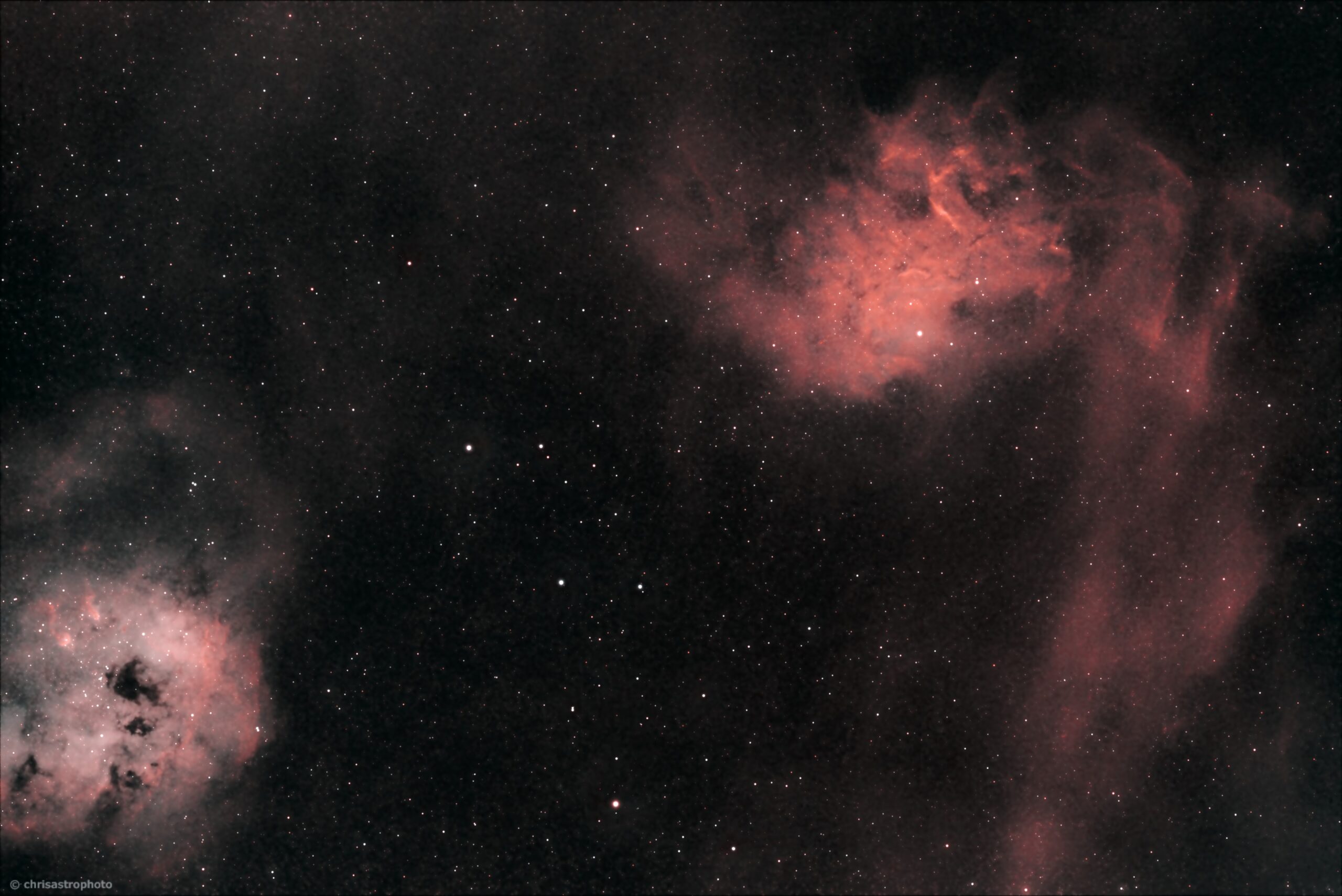
Emission Nebula in Auriga 1500 light years away from earth. On the left IC 410 belonging to the same nebula complex.
Read more “IC 405 (Flaming Star Nebula)” Planetary Nebulae
Planetary Nebulae
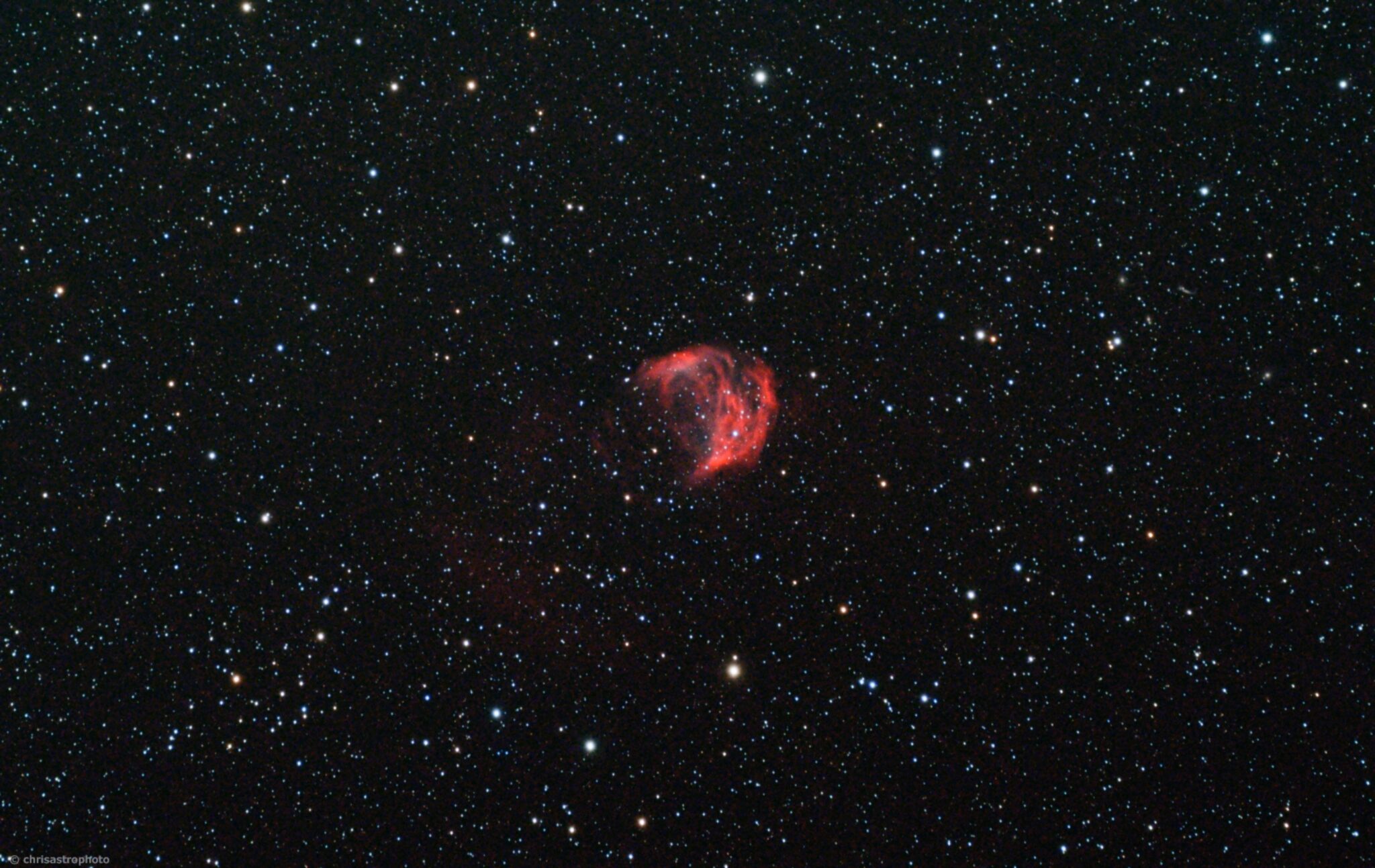
A Planetary Nebula in constellation Gemini about 1500 light years from earth. At first it was thought to be a Supernova remnant, but more recent measurements of the expansion velocity suggest it to be more likely a Planetary Nebula. These are the outer shells of a sun-like star which have been expelled at the end of the active live of the star.
Read more “SH 2-274 (Medusa Nebula)” Emission Nebulae
Emission Nebulae
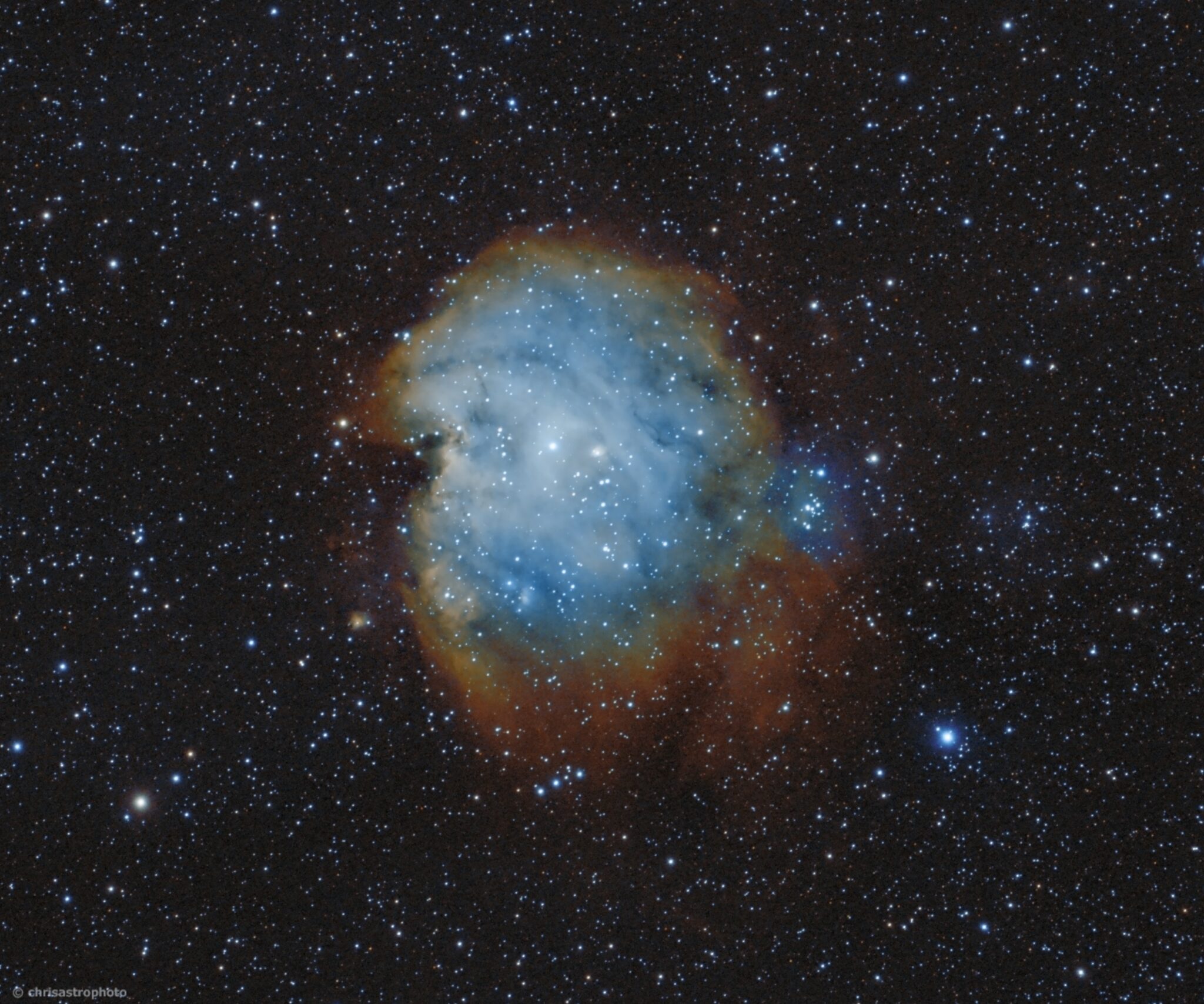
NCG 2174 is an emission nebula in constellation Orion. It is associated to open star cluster NGC 2175 which delivers the energy which powers the radiation of the gas.
This is a final processing result pushing the blue inner part. Normally is it shown in red, result of prominent Halpha radiation from hydrogen.
Read more “NGC 2174 (Monkey Head Nebula)” Emission Nebulae
Emission Nebulae
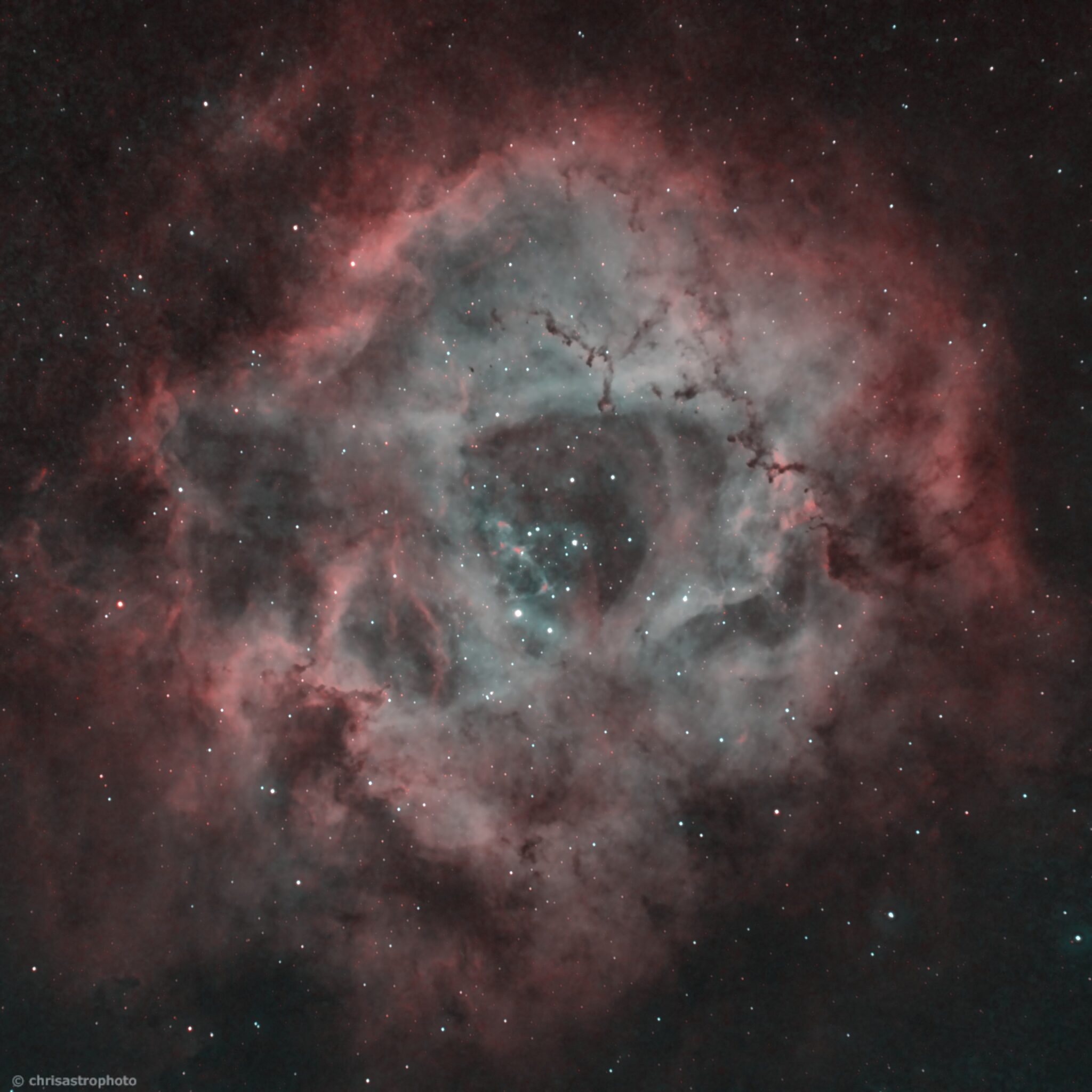
NCG 2246 (Caldwell 439) is a star forming region in Monoceros about 5000 light years distant. The young star cluster NGC 2244 (Caldwell 50) in the center of this region has been formed from material of this cloud and is pushing the remaining material towards the outside. The nebula will disappear in some million years while still creating new stars …
Read more “NGC 2246 (Rosetta Nebula)”